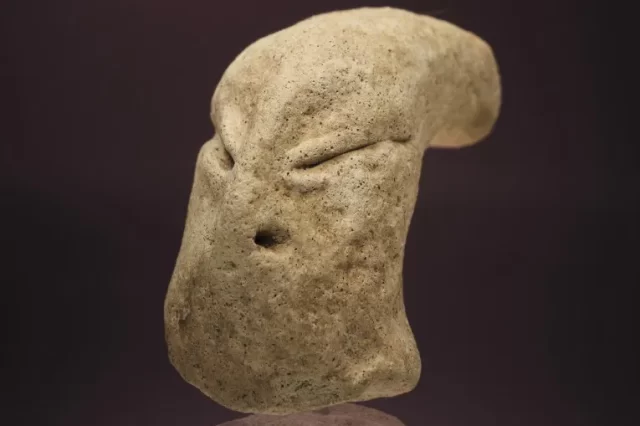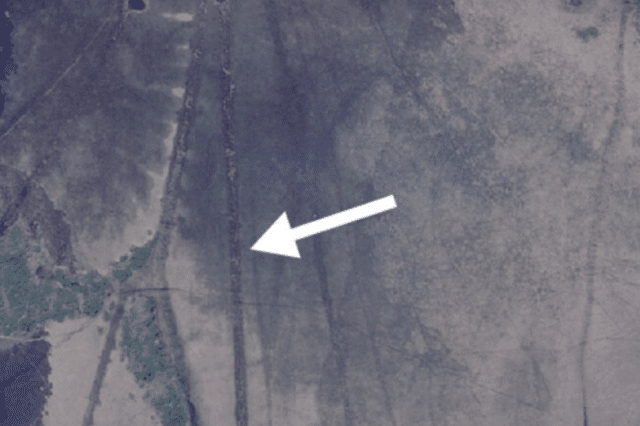Claims of a Human Footprint Dating Back 290 Million Years.
The Zapata Footprint is an alleged human footprint embedded in a Permian rock in New Mexico. Referred to by some as the New Mexico track or the Zapata track, a number of conspiracy theories have been woven around it.
A Permian Mystery?
Those in favor of its authenticity argue it is the ultimate evidence that humans walked on Earth hundreds of millions of years ago, completely ignoring what modern science tells us.
According to experts, one of the earliest defining human traits, bipedalism, the ability to walk on two legs, evolved over 4 million years ago. As noted by the Smithsonian, humans first evolved in Africa, and much of human evolution occurred on that continent. The fossils of early humans who lived between 6 and 2 million years ago come entirely from Africa.
More importantly, early humans first migrated out of Africa into Asia between 2 million and 1.8 million years ago.
They entered Europe somewhat later, between 1.5 million and 1 million years. The species of modern humans populated many parts of the world much later. For instance, people first came to Australia, presumably within the past 60,000 years and to the Americas within the past 30,000 years or so. (Retrieved humanorigins.si.edu 5/10/2019)
But…
The footprint itself has not been the subject of actual scientific study; nonetheless, it has been claimed that the footprint from the Permian period is genuine.
During the Permian, the world was dominated by two continents known as Pangaea and Siberia, surrounded by a global ocean called Panthalassa.
One researcher who argues the footprint is genuine is Dr. Don Patton, who, according to his website, worked as a geologist in the US, Canada, Australia, England, Mexico, Peru, Bolivia, Jordan, Israel, and Turkey.
Patton also worked as an archeologist in various missions, including the United States, Mexico, Peru, France, Italy, Israel, Jordan, Cambodia, and Turkey. That’s quite a resume, right? However, the degrees and Ph.D. he claims are academically invalid and related to unaccredited Christian institutions.
A 290-Million-Year-Old Footprint
As noted by Patton, the footprint itself was supposedly identified in 1987 by paleontologist Jerry MacDonald who found fossilized tracks from many various species of animals and birds in Permian strata between 290 to 248 million years ago. Among them was the enigmatic footprint.
But that may not be entirely true.
Among the many imprints discovered by Macdonald, a plethora of them were controversial because of their resemblance to imprints of animals from much later periods, including imprints left behind by animals akin to modern birds and bears.
The Permian was a period long before the Dinosaurs, let alone the appearance of relatively modern animals and birds.
Having that said, there is no evidence that MacDonald ever found the mysterious human footprint. All details pointing towards MacDonald as being the print’s discoverer come from Patton’s writing.
Despite drawing interest from ‘alternative’ researchers due to its incredible age, the alleged footprint has not been demonstrated to be real. Furthermore, as author Glen J. Kuban explained, the footprint shows several features not typical of genuine human prints.

Kuban explains that the line and position of the toes are unnatural and that the footprints ball is narrower and rounder compared to other, more genuine prints. Furthermore, Kuban notes that a skilled carved would have no issues reproducing a footprint like the one claimed by Patton as original by simply removing the matrix farther away from the print.
A 290-Million-Year-Old Footprint: A story that doesn’t hold water
Since no research has been done on the footprint, and since it has not attracted serious scientific studies, it has been dubbed as a hook line for creationist history and creationist propaganda.
What is worrying is that the footprint has been ‘cut out’ from the bedrock, as we can see in images from Patton.
Furthermore, considering the strong claims made by Patton and his supporters, it is surprising, to say the least, that to date, no scientific studies have been published on the matter. No details about the footprint’s geological or paleontology of the host formation have been presented.
We know that the footprint itself is on a loose block of rock, and no evidence has ever been presented that argues it was part of a striding sequence or part of a Permian formation.
In fact, in the above image, we can see Don Patton in front of the controversial imprint, and it seems like the curious imprint is located on a separate slab of stone, or a type of plaster caster rather than an in-situ footprint just, as Glen J. Kuban previously explained.
So what does that mean? It means that the 290-Million-Year-Old Footprint presented by Patton has never been demonstrated to be a real human footprint. Furthermore, there is no evidence whatsoever that the rock came from a Permian rock formation.
Given the lack of data and studies, and without more substantial evidence concerning its origin, the 290-Million-Year-Old Footprint is a curiosity at most and not evidence of humans walking the Earth hundreds of millions of years ago.
Have something to add? Visit Curiosmos on Facebook. Join the discussion in our mobile Telegram group.





